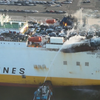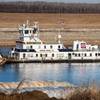Legal Matters
The Executive Office of Environmental Affairs (EOEA) for the Commonwealth of Massachusetts has modified the scope of an application for the designation of a "no-discharge zone." In 1998, the EOEA submitted a proposal to the EPA for a "no-discharge" designation encompassing all coastal waters within the jurisdiction of the state. In 1999, the application was withdrawn due to the substantial costs associated with providing the requisite pump-out facilities and strong opposition from local communities.
The EOEA has now decided to pursue "no-discharge" designations for individual embayments and/or areas of particular environmental concern. The agency is preparing an application for Buttermilk Bay, located at the southern end of the Cape Cod Canal. Buttermilk Bay contains significant shellfish resources that may be damaged or contaminated by sewage discharges from vessels. If approved by the EPA, the anticipated impact on commercial vessels will be minimal, given the geographic limitations of the zone. The EOEA will also evaluate the feasibility of additional no-discharge zones in the vicinity of Buzzards Bay.
USCG Plans for High Water in New Orleans
The USCG may set up a new method to notify towing companies of high water safety concerns on the Mississippi River below Baton Rouge; one of the proposed improvements in the high water plan for the river.
Even though drought conditions are predicted for the spring, the USCG is taking a look at its high water crisis action plan covering the Mississippi River from Baton Rouge south. This updating of the plan has been an annual exercise since the plan was first developed after the 1997 floods.
USCG Captain of the Port for New Orleans Stephen Rochon brought together industry leaders and USCG officers at a meeting to discuss the plan and start the process of revising it, if necessary. The USCG has agreed to one positive change in the plan. It will set up an email notification system to alert towing companies to any changes in high water safety control measures in the MSO zone. In the past, when conditions warranted changes in safety measures, the USCG announced those changes through radio broadcasts to mariners.














